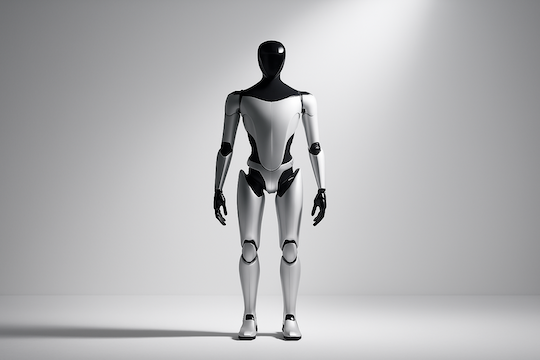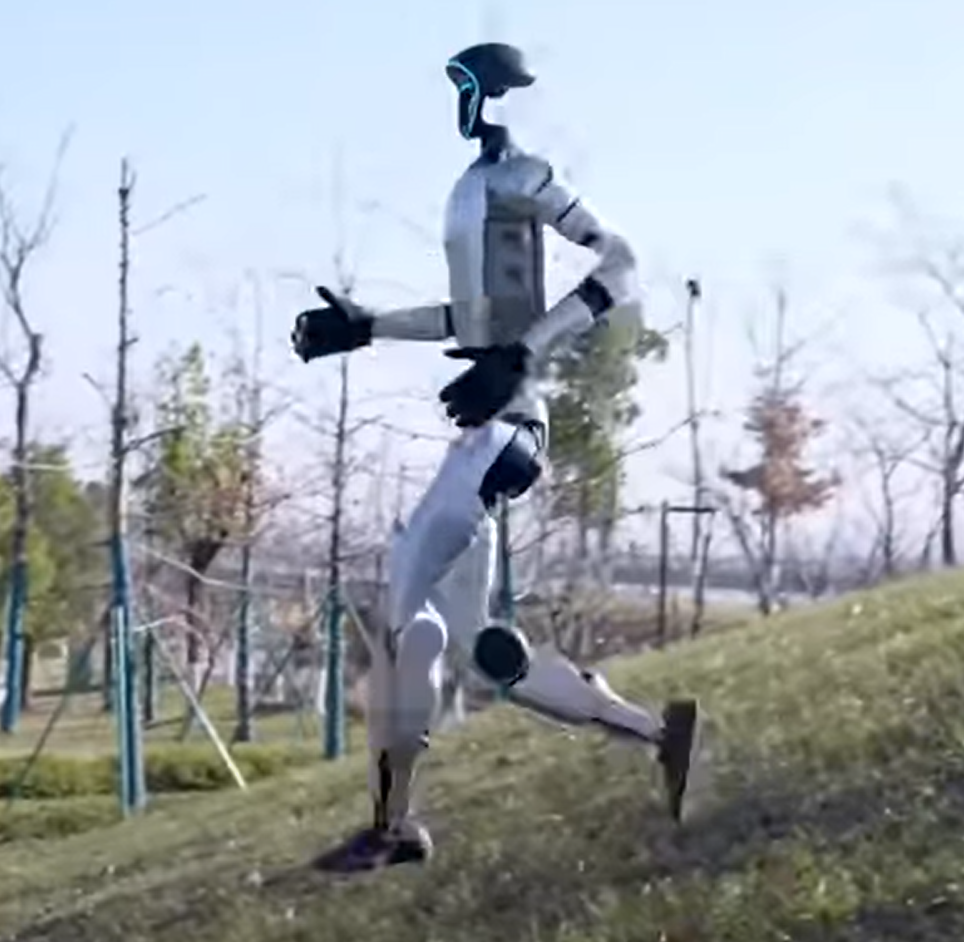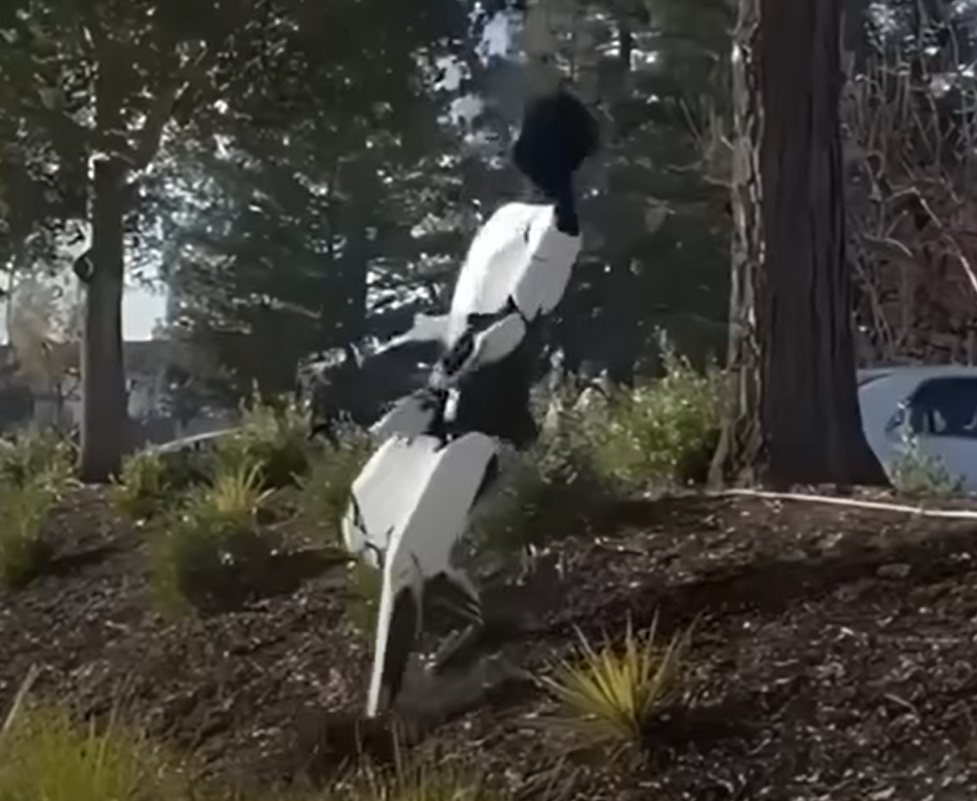
Made in China. Trained in America.
Posted March 25, 2025
Chris Campbell
It’s 2030. You wake up, hungover, vaguely ashamed of your 3 a.m. crypto trades, and 15 pounds heavier than you meant to be.
But it’s fine—your humanoid robot is already making coffee, folding your laundry, and watering the ficus.
Wait, you say.
You don’t remember buying a ficus.
Doesn't matter.
Now the only question that matters:
Did you buy the Unitree G1… or Tesla’s Optimus?
Because buried in that choice is something bigger—who actually won the robot wars: Beijing or Silicon Valley?
Round One: First Impressions Are Lies
For starters, I’m comparing the G1 and Optimus because—believe it or not—they’re both aiming for the same ballpark price: $20,000.
Yeah. The cost of a used Toyota. Or a really aggressive espresso habit. For that, you get your very own humanoid robot.
The Unitree G1 runs through parks like someone just yelled “free Wi-Fi.”

Optimus, on the other hand, moves like a drunk dad at a wedding—almost falling but saving itself at the last second.

BUT…
Don’t be fooled by appearances.
That self-correction? That’s next-level autonomy.
This isn’t a dance contest. This is a slow war for dominance in everything—labor, logistics, and your toilet plunger.
Round Two: The G1 is a Gymnast, Optimus is a Worker
The Unitree G1 weighs 77 pounds—about the size of a golden retriever on creatine.
With 41 degrees of freedom, it can bend, twist, and kick better than most yoga instructors, but don’t let the showmanship fool you.
It’s not autonomous.
You control it with a remote or phone app. It only understands a handful of commands, and it definitely won’t be chatting with you unless you Frankenstein some AI into it yourself.
What you’re buying is potential. A sandbox with legs.
Optimus, meanwhile, is beefy. Like, “I lift pallets for fun” beefy. It weighs in at 125 pounds and looks like it was built to replace Todd in logistics.
It’s got near-human hand dexterity, can lift up to 44 pounds, learns tasks by watching humans, runs all day on a single charge, and somehow knows how to charge itself without falling into a sink.
If the G1 is a robot you’d take to Burning Man, Optimus is ready to clock in, fill out safety forms, and ask where the forklift certification training is.
G1 wants to dance. Optimus wants your job.
Round Three: Intelligence, Autonomy, and All the Buzzwords
Tesla is cheating. In a good way.
They took their Full Self-Driving (FSD) system from the cars and cobbled it into a biped.
Cameras, computer vision, neural nets—all running the same pipelines that avoid pedestrians in San Francisco.
The result? Optimus is starting to think.
It can navigate spaces, avoid obstacles, collaborate with other robots, and map a charging station like it’s Google Maps in 3D.
G1 is still controlled remotely, but it can be upgraded.
It’s got Nvidia chips, depth cameras, LiDAR, and open-source everything. You could probably strap ChatGPT to it and get it to recite Nietzsche while doing squats.
Tesla? Closed-source. Apple vibes.
Round Four: Who’s It For?
G1 is for the curious. The hackers. The hobbyists who want a robot to do parkour and maybe one day pour tea. It’s available now. It’s tinker-friendly.
Optimus is for Elon’s factories. And, eventually, your house.
It's built for industry, logistics, and replacing three Amazon warehouse workers while also detecting gas leaks.
Tesla wants millions of these things out there.
The Optimus model might be the iPhone moment for robots. Just don’t expect it to hit shelves next week.
Final Verdict: Who Wins?
Well…
Unitree G1 is here now. It’s agile, modifiable, and already strutting on YouTube like it owns the place. If you’re a developer or researcher, it’s a dream toy.
But Optimus? Optimus is the monster under the bed. Quiet. Evolving. And about to wake up.
This isn't just a battle of robots. It’s a preview of the next great power shift. Not fought with tanks, but with neural nets and precision actuators.
Your ficus doesn’t care.
But you probably should.
More on that tomorrow.
(We’re going to be talking about Trump’s dogs.)
